On the Eve of GameFi Explosion, the Competition of Chain Games “Tribes” is Underway
Chain Games competition "Tribes" underway on the brink of GameFi explosion.Opportunity to bring the next tens of millions of new users into the cryptocurrency field.
Current situation of the GameFi track
The overall performance of the GameFi track in 2022 can be summarized as high opening and low walking. Except for outperforming the market in April, the market value of GameFi basically maintained the same trend as the cryptocurrency market, but the decline was greater, and it entered a deep bearish state.
The sluggish market is intuitively manifested in the short life cycle of projects and the rapid loss of users. From the “Play to Earn” model established in 2021 to the “Move to Earn” and “X to Earn” models that broke the circle in 2022, the “new wine in old bottles” game mode is still attracting a large number of new users with a variety of Ponzi models and attractive returns. However, the misuse of Ponzi models gives the project party and players incorrect guidance:
- Analysis of SEC’s Cryptocurrency War Trigger and 5 Possible Endings
- HOLD Cave: The Story of Bitcoin’s Growth Amidst Volatility
- Long push: Data tells you whether the NFT market is about to start a new bull market
-
For the project party, give DeFi a Game shell, disguise its unsustainable nature with a complex token economy, and once players cannot profit and lose, all GameFis will fall into an inescapable death spiral, and few projects can maintain active status for more than three months.
-
For users, actual income has become their most important consideration factor, and both game beliefs and community culture have been replaced by the payback period. Players compromise on the game experience, leading the project party to be unable to extricate itself from the revision of the economic model plan.
But behind the cruel reality, there are also opportunities. The GameFi track is still one of the areas that absorbed the most financing in the cryptocurrency industry in 2022, with a nearly doubled increase in financing amount compared to the same period last year. In the development of GameFi, the chain game ecology has played an important role. Gala Games, which led the last round of GameFi bull market, has innovated, and TreasureDAO, which incubated the explosive chain game The Beacon, has established brand awareness, and Block Ape Scissors backed by Binance hopes to reshape the BSC chain game circle. In the alternation of old and new, the market may have reached the bottom and they may become the driving force for the outbreak of GameFi track in the next round of bull market after experiencing the precipitation of the bear market.
Gala Games: Leading the GameFi Field, How Far Has the “Steam of Blockchain Games” Come?
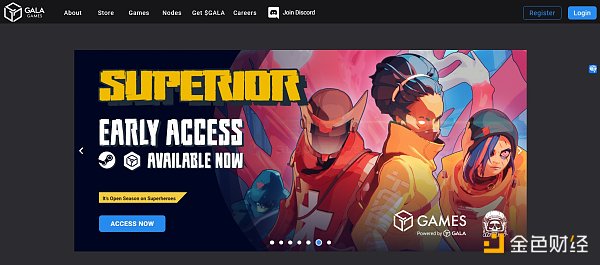
Gala Games: The “Steam of Blockchain Games”
Gala Games is a blockchain game development company founded in 2018, aiming to build a decentralized game ecosystem and become the “Steam” of the blockchain gaming industry. Unlike the real Steam, Gala Games needs to play the roles of both game developer and game aggregation platform. In addition to the games developed by the team itself, other game companies can also launch games on the Gala platform after getting approval from the nodes.
Gala Games is developing and operating multiple games of different types, giving players control over the assets in the game, which can be traded on the blockchain. Players will not only experience the fun of the game, but also control their own game assets, and can earn profits in GameFi with their game skills.
The Gala Games ecosystem includes five parts: games, game distribution platform, NFT market, cloud hosting, and the $GALA token economy. Gala Games runs on a distributed computer network, not on a centralized server controlled by a single entity. These “computers” (called nodes) provide processing power for Gala Games’ decentralized gaming network in exchange for rewards.
In Gala Games’ decentralized node network, users can decide which games can be launched on the Gala Games platform through consensus voting, and can also decide the reward ratio of the nodes through voting. For games launched on the Gala Games platform, most of their in-game NFTs will be listed on the Gala NFT store, while a small portion of the NFTs will be allocated to founder nodes through a random algorithm.
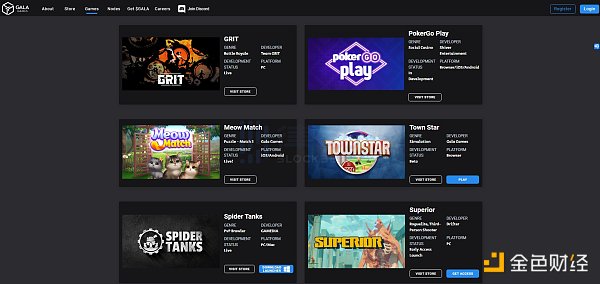
Gala Games has launched 18 games
Currently, Gala Games has launched 18 games. In addition to the popular official self-developed games Town Star, Meow Match, Mirandus and Last Expedition, there are also games from other studios such as GRIT, PokerGo Play, Spider Tanks, Superior, Legends Reborn and more. These games cover various types such as role-playing, shooting, simulation management, card strategy, and tower defense, and the platforms they run on include web, PC, mobile, and more, almost covering all popular game types and operating platforms.
Additionally, in terms of visual effects, the quality of these games has far exceeded that of some other chain games of the same period. However, while ensuring the quality of the game, it has also brought some problems. High-quality games (3A or quasi-3A level) have high investment costs and long development cycles. How to adapt the economic model and development progress in the fast-paced crypto circle is a huge challenge. In addition, the overall operation of Gala Games is biased towards centralization, and decision-making is relatively efficient and centralized, but the community atmosphere is relatively weak, and the scope of node governance is limited. For ordinary investors, both information acquisition and investment participation have a high entry threshold.
TreasureDAO: The “Nintendo” of the crypto world is gearing up, and “small and beautiful” is the top priority
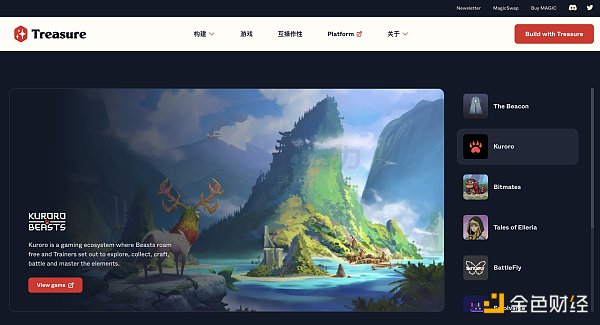
Treasure DAO
Treasure DAO is a game ecosystem built on Arbitrum and connected by the MAGIC token. The goal is to establish a “decentralized Nintendo”. Every item in the Treasure ecosystem (Legions NFT, MAGIC token, etc.) is distributed for free, and other collections on the Treasure market are also distributed for free and fairly. Treasure was originally built on the Ethereum mainnet, but later migrated to the L2 layer Arbitrum chain due to the high gas cost of the Ethereum network at the time to reduce the user threshold.

TreasureDAO ecosystem overview (source: PKU Blockchain)
TreasureDAO was launched by the community in November 2021, driven by the community and launched fairly, starting from a Loot imitation plate Treasure NFT, and gradually growing into one of the most well-known game ecosystems in the GameFi field through chain games Legions, Life NFT and Magic starting from the air coin. Looking back at its development history, TreasureDAO’s growth cannot be separated from the support of its internal supporting infrastructure: the universal currency Magic and the three horses Trove, Bridgeworld, and MagicSwap.
Trove is an NFT market and game launcher on Arbtrium, where NFTs can be traded. Bridgeworld is the core economic hub of Treasure DAO. As a resource coordination game, it integrates many Defi gameplays such as mining, farming, summoning, and exploration to promote the development of Treasure DAO’s economic system. Additionally, there is the AMM protocol MagicSwap, which aims to become a portal for cross-game economies in the TreasureDAO ecosystem. Currently, Magicswap’s swap and pool only have two trading pairs, Magic/Gfly (BattleFly DAO’s governance token) and Magic/ELM (Tales of Elleria’s governance token).
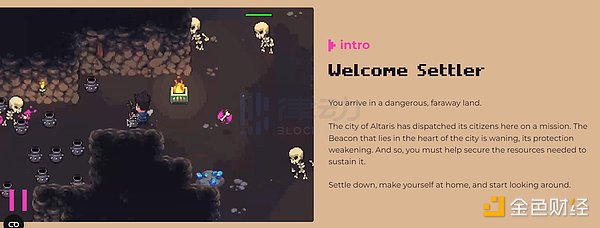
The Beacon, a game supported by the infrastructure, is the ignition device that makes the ecosystem prosperous. As a phenomenon-level product launched by Treasure DAO, The Beacon has nearly 26,000 players after only one month of launching on Arbitrum. The number of purchases of the game’s Genesis character NFT reached as many as 65,000 times. The popularity of The Beacon has also driven the increase in Treasure DAO’s data, directly increasing the weekly active users of Treasure DAO from around 5,000 to 20,000, almost quadrupling it.
The Beacon is an RPG game. In the game, players can choose a basic weapon to enter the dungeon for exploration. During the exploration, players can upgrade their weapons for better combat. The game modes include home mode, single-player PVE mode, and tavern quiz. Home mode is used to edit houses, single-player PVE mode is used to explore dungeons within a specified time to get rewards, and tavern quiz is mainly used to answer NPC questions.
Although The Beacon game itself does not have too many stunning features, it has attracted a lot of attention in the Web3 field. One of the important reasons is that there are few really fun games in the Web3 game field. The appearance of The Beacon game has brought some surprises to people. Although it may not be top-notch in Web2 games, it is considered a good level in Web3 games. This also indicates that Web3 games are still in the early stage and there will be more exploration and development.
TreasureDAO targets the long-tail game market. 3A games are only the standard that a few game factories can reach. The gradually growing Web3 players have a great demand for such small games and AA games. TreasureDAO is trying to make this “small and beautiful” model work. Starting from popular games and gradually expanding, TreasureDAO establishes a set of infrastructure and ecology to meet the needs of independent developers. Each game can benefit from the economic value of MAGIC and shared resources, and the accumulated player activity content can be used to form an economic entity. It will not be affected by the short-term impact of a single game, so it has a stronger ecosystem resilience.
Block Ape Scissors: Backed by Binance, the “Great Reshaping” of the BSC chain game circle
Most of the previous GameFi projects had very simple gameplay compared to traditional 3A games. Many of these projects were hastily launched to catch up with the market trend and still used the old DeFi mining approach disguised as a game. They were very different from traditional online or single-player games in terms of gameplay, and many project developers even treated games as financial instruments. This resulted in the unfortunate situation where blockchain games were considered a failure. BSC chain was hit particularly hard by these “dog chain games”. Looking back at history, some well-known GameFi 1.0 projects such as Farmer World, Spaceships, THG, Raca, Valkyrio Valkyrie, and BNB Hero all ended up in a spiral of death.
It’s not about putting these GameFi 1.0 projects on a “shame pole”. In fact, these low-quality Play-to-earn blockchain games played an important role in the development of GameFi. However, fundamentally, they are similar to dog coins and meme coins to some extent. They ultimately became short-term speculative tools for a small group of high-risk enthusiasts. At this stage, gamers are no longer satisfied with this. They have higher requirements for the basic quality of games and token economies. Players will be more concerned about whether there is a way to solve the single-game economic mechanism, whether the game is more playable, whether it has social attributes, and so on. So, is there a way for players to push the process themselves, choose their own favorite blockchain games in all aspects, and participate in the development process? This is what Block Ape Scissors is doing.
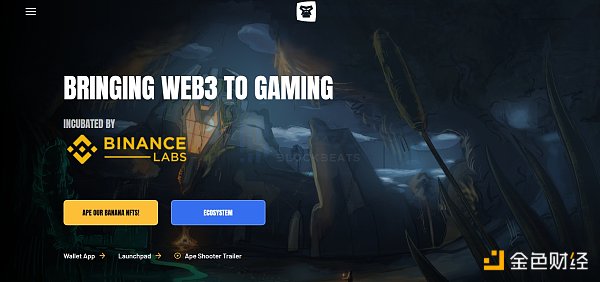
Block Ape Scissors is a game community platform based on the BNB Chain. It was announced on November 15, 2021, incubated by Binance Labs, and its vision is to provide players with entertainment and create lasting value through innovative mechanisms and carefully designed game experiences. The platform introduces DAO governance model, breaks the traffic barriers and monopoly of traditional game platforms, provides more opportunities for emerging developers, and provides players with a safe, fair, and fun gaming environment.
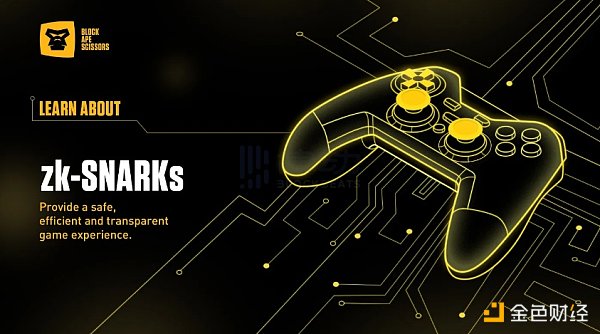
The most important thing is the DAO governance model. Players can obtain token staking rights by purchasing platform equity cards called “Ape Banana miners”, which use POS mining mechanisms. Block Ape Scissors adopts a sharing economy model that encourages community members to participate in the construction and operation of the platform. Participating in games, contributing content, and participating in governance activities can also earn a certain amount of platform tokens $Banana. Developers can also earn Banana by contributing games or providing services. This sharing economy model encourages community members to participate actively and promotes a self-sufficient and sustainable ecological system.
Community members and independent game developers will take “different actions”. For independent game developers, they can upload their own works as proposals in the form of demos at a fixed time each month, and then Block Ape Scissors DAO will process these proposals. The community members will select the most attractive and playable games through community voting. Block Ape Scissors will then incubate them, help developers complete the entire game construction, and then recommend them on the homepage of Block Ape Scissors.
During the voting process, all DAO organizational members participating in the voting can enjoy the profits after the game goes online. For example, if game A is selected by voting and Block Ape Scissors incubates it, when game A brings in $1 million in profit, Block Ape Scissors can get 25% of the profit (to support the platform’s further construction and expansion), the Block Ape Scissors DAO treasury can get 15% of the profit (used for wages of DAO organization contributors and some proposal expenses), and DAO organizational members can get 10% (obtained according to their corresponding voting rights). The remaining 50% will be used to repurchase and burn $Banana (to accelerate token deflation). (The above data is for example only, and the exact data is to be officially announced.)
It can be seen that community members and independent game developers are on the same path. The project party and game players are no longer on opposite sides. The entire Block Ape Scissors ecology will work together to develop games that are more suitable for the current blockchain gaming market. Whether it is pursuing the playability of games or the closed loop of the economic model, community members will vote to choose the blockchain games they want, or in other words, interest-driven games that can make the Block Ape Scissors ecology more profitable.
In addition, fairness and validation of transactions are crucial for a blockchain game with financial properties. Block Ape Scissors uses zk-SNARKs to achieve fast and efficient gameplay, allowing for the processing of a large number of transactions in seconds while maintaining transaction privacy and verifying their correctness.
Block Ape Scissors is also exploring AI and will train an AI robot to generate different economic models. DAO members will vote each week to choose the one they believe is better, helping the AI robot continuously optimize and find new solutions for GameFi.
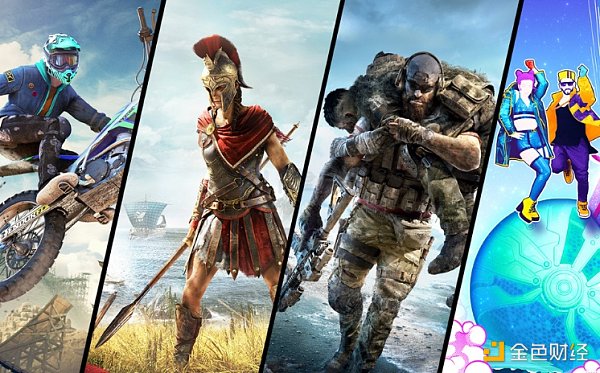
Web2 game companies such as Ubisoft and Lilith are also looking for opportunities for change.
It is worth mentioning that the Block Ape Scissors team has good relationships with many Web2 game companies and will gradually transform several once-world-renowned game IPs in the next six months, bringing more players from traditional fields into the encrypted world through games. Web3 games may break the dilemma of traditional game buying by volume (i.e., attracting players through paid advertising and other means) and subvert traditional profit distribution structures, providing developers with more monetization opportunities and creating new markets for the game industry. The transition of the game from Web2 to Web3 may be an opportunity for Block Ape Scissors to make a comeback, and the “great reshaping” of the BSC chain game circle may be right in front of us.
The Future Opportunities and Challenges of GameFi
On May 25th, Polygon co-founder Sandeep Nailwal stated that “Web3 games are one of the biggest drivers of cryptocurrency adoption on a large scale. In the next 6-18 months, some top games will be released in Web3. Just last year, the financing funds of Web3 games exceeded 2 billion US dollars.”
The entire history of the game has reached a critical turning point, and the game industry urgently needs to cross the divide from Web2 to Web3 and move towards the era of blockchain games. Given the playability and economic value of games and NFTs, GameFi provides an opportunity to bring the next tens of millions of new users into the cryptocurrency field. Looking back on the development process and development cycle of GameFi, the bull market in this subdivision may already be looming. We bid farewell to the barbaric development of the first half of GameFi, and who can achieve paradigm transformation and open up a new round of innovation and growth for the sluggish market? Let us wait and see.
Reference
The ZK-Snark Gaming Revolution
On the Rise of Gala Games and Its Implications for Project 12
Web3 STEAM? A Comprehensive Analysis of Treasure DAO
Understanding the Evolution of Treasure DAO in One Read
Demystifying the Chain Game Economy Model
We will continue to update Blocking; if you have any questions or suggestions, please contact us!
Was this article helpful?
93 out of 132 found this helpful
Related articles
- What are the highlights of GBRC-721 compared to BRC721?
- Why SEC Chairman Gary Gensler is Cracking Down on the Crypto Market: Latest Speech
- Metaverse Investment: Opportunities and Risks in the Trillion-dollar VR Market
- ZK Co-Processor: Further Opens up the Verifiable Computing Market
- On-chain data analysis: Are we on the brink of the next NFT bull market?
- Amid the era of encrypted regulation, the United States is falling behind.
- Is the Bitcoin ecosystem a flash in the pan or brewing for a bigger explosion? BRC-20 has seen a roller coaster trend.



